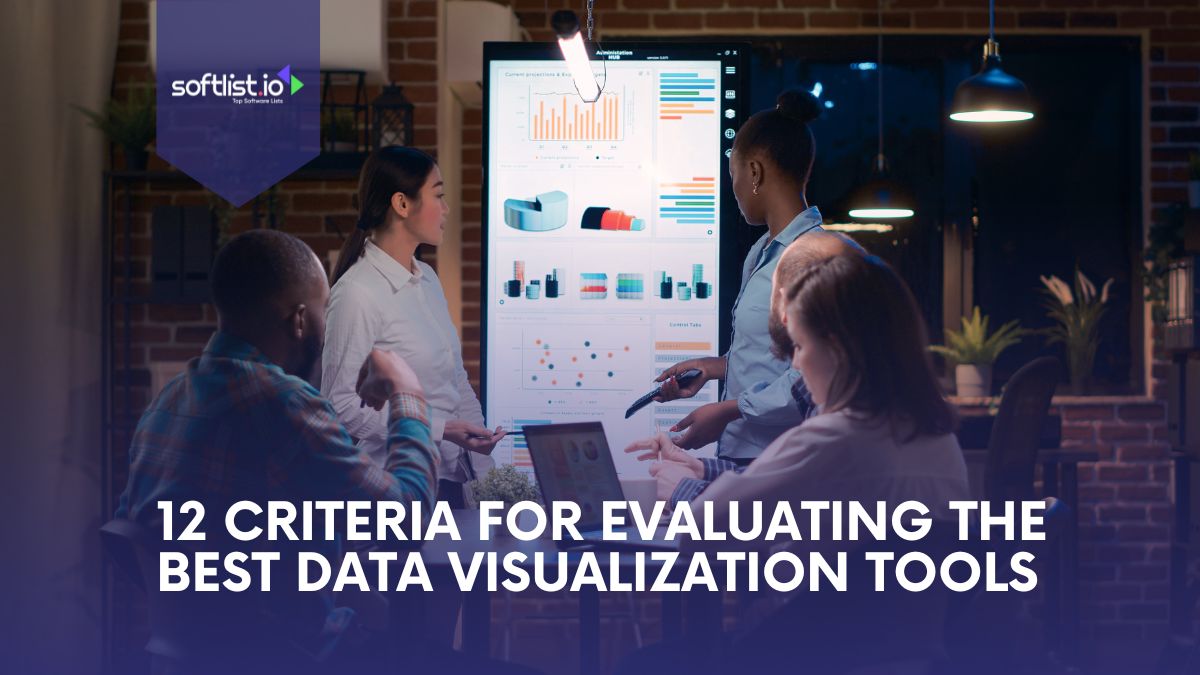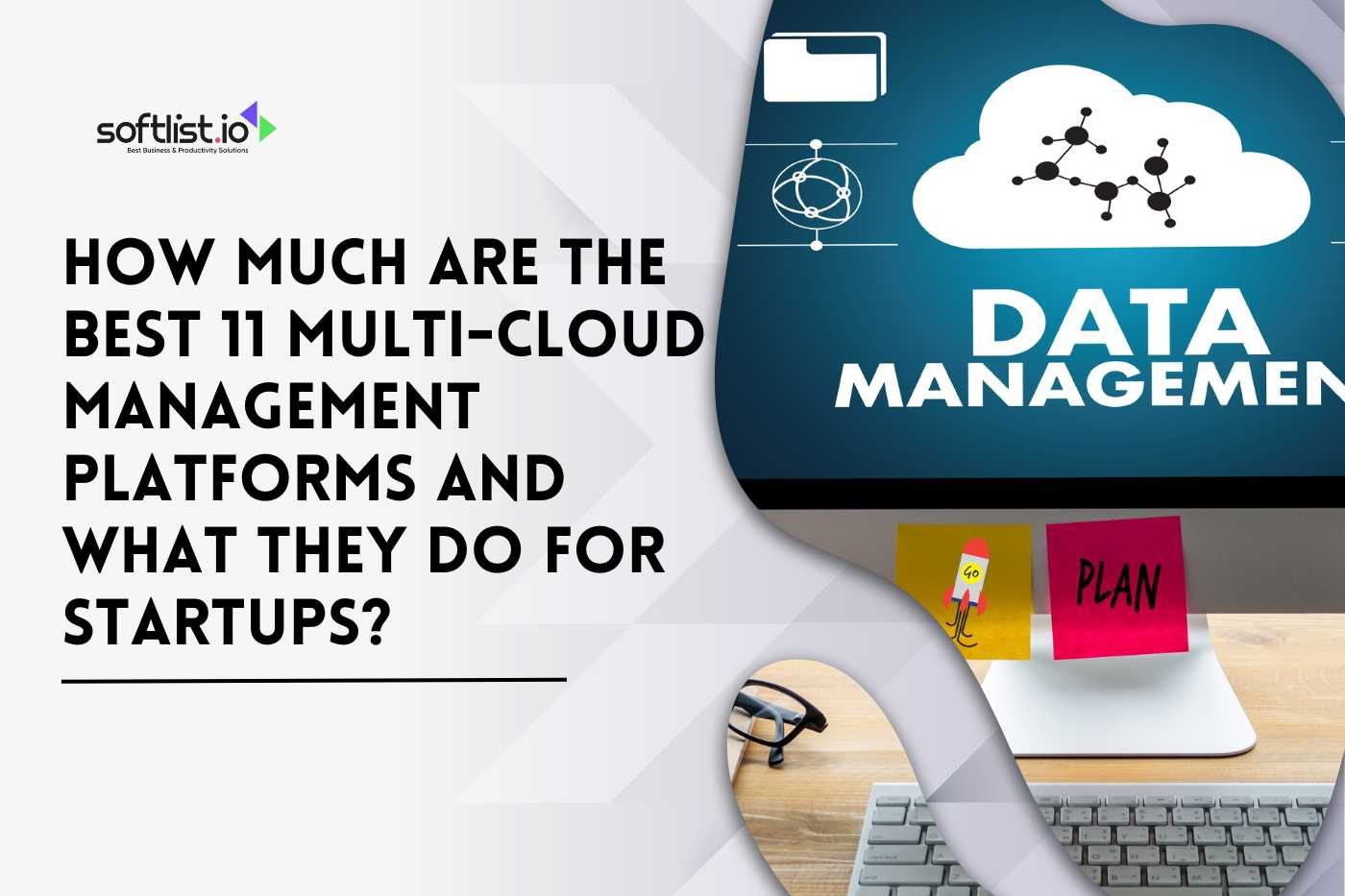Evaluating data visualization tools is crucial for any data scientist or business professional working with big data. Choosing the right tool can make complex data analysis more efficient, helping to reveal patterns in data that might otherwise go unnoticed. Many tools, ranging from open-source platforms to advanced visualization software, cater to specific needs in data science and information visualization.
When selecting the best option, it’s essential to consider criteria such as ease of use, scalability, and the ability to use data from various sources. That’s where data visualization tools excel: they transform data into actionable insights. Read on to explore the 12 key criteria to help you find the tools that can be used for your next project.
User-Friendliness: Making Data Accessible

Source: Canva Premium
It’s important to choose data-showing tools that are easy to use. To make choices based on data, businesses need platforms that are easy to use more than ever. With an easy-to-use program, any technical professional can get to data. It can analyze it, and conclude it. This ease of access helps people in groups make intelligent decisions.
Easy-to-use interfaces help people learn faster and get more done. In an information-based market, companies that share data stay competitive and give their employees more power.
Customization Capabilities: Tailoring to Your Needs
Technologies that show data need to be adjustable to meet the needs of many different types of businesses. Every business needs flexible tools to read and show data, whether big or small.
Customization ensures that the right people understand what pictures mean to them. It also helps people talk about their thoughts. By changing how things look, a business can get people to notice numbers and stories.
If you can change a tool, it can grow with your business. Making changes to tools that show data keeps them working, up to date, and essential to business strategy. You can choose and try the best data visualization tools now!
Data Integration: Bridging Diverse Data Sources

Source: Canva Premium
Data is beneficial when considered as a whole. Data presentation tools are essential for linking data sources together, a process known as data integration. Companies can get information from e-commerce sites, CRM systems, and tools that track people on social media.
A good tool for showing data should make connecting all of these sources easy. It’ll show you everything about your business. Things are now more uniform, and no data layers exist.
It helps people in the market understand things better. Ultimately, these choices make it easier to join data, which helps companies make intelligent decisions based on data.
Real-time Data Processing: Staying Updated
The best data display tools must be able to work with real-time data in today’s digital world, where things change quickly. This is why:
- Timely Insights: Companies can quickly adapt to changes and trends when they handle real-time data.
- Gaining a market edge means staying up to date. Real-time data helps businesses decide quickly and get ahead of the competition.
- More Accuracy: Using real-time data reduces the need to rely on old data, improving business plans.
- Better engagement: Customers are more interested in customer-interactive platforms. These things can show live, changing info.
To sum up, data visualization tools must process data in real time to stay flexible and current in today’s market.
Scalability: Growing with Your Data

Source: Canva Premium
Scalability isn’t just a buzzword; it’s an essential part of data display systems. Among the main reasons are:
- Future-proof: A flexible tool can handle growing data, so problems only happen once companies grow.
- Scalable options cut down on tool updates, which saves you money in the long run.
- Scalable tools can handle different amounts of data and work well when they’re under a lot of stress.
- Stability: These technologies can be used by both small businesses and big companies.
Scalability ensures that a business’s data display tool can grow as needed.
Collaboration Features: Teamwork in Visualization
Data-driven success necessitates collaboration in the constantly changing digitized environment of the present day. Data show tools must have ways for people to work together. Users can talk to each other, change graphics, and connect with them in real time.
This makes it easier to understand the facts. Firms need to make it easy for people to work together on visual ideas as they focus more on data. Critical joint features in data visualization tools can make it much easier and faster to make decisions based on data.
Mobile Responsiveness: Visualizations on the Go

Source: Canva Premium
Since there are so many mobile devices, data visualization tools must work well for workers who are always on the go. Mobile-friendliness is no longer a nice to have.
More and more professionals use smartphones and tablets for work, so they need to be able to see real-time info anywhere. When a tool changes appearance, insights can be seen and used even on smaller screens.
So, it’s essential for a data visualization tool to show data in a clear way that works well on mobile devices. You will always be able to get to and understand your info.
Security Features: Safeguarding Your Data
Data is vital for business, so keeping it safe is essential. The best tools for visualizing data make it look good and safe. If their data is stolen, companies may lose money and have a bad image. The protection features of data display tools are essential.
Encryption, multi-factor authentication, and strict entry rules are all essential for keeping data safe. In today’s dangerous digital world, a tool that only shows data and doesn’t protect it needs to be completed.
Visualization Variety: Exploring Diverse Representations

Source: Canva Premium
In data analytics, clarity is paramount. Given the diverse nature of datasets, there isn’t a one-size-fits-all approach to visualization. It’s essential to have various methods to depict complex data in an effective way. For instance, while a pie chart might provide an intuitive breakdown of market segments, a heatmap can offer insights into how users navigate a website.
Pie charts, with their built-in visual appeal, can simplify intricate data for better accessibility. Meanwhile, bar charts might be the preferred choice for displaying yearly sales trends.
The true strength of data visualization tools lies in their ability to export a diverse range of visuals, granting analysts the freedom to tell data stories in a way that resonates. In essence, a broad spectrum of visualization techniques bridges the gap between raw data and actionable insights, making narratives more relatable and comprehensible.
Cost-Effectiveness: Maximizing ROI
Many businesses are looking for online ways to improve their return on investment (ROI) in today’s digital world. Best data visualization tools are some of the best in the field of Business Intelligence (BI).
These tools promise both better understanding through graphs and cost-effective ways to interpret data. Power BI and other tools like it are the best on the market because they offer the best information at a low cost.
Using these kinds of BI tools helps businesses get the most out of their data while also keeping an eye on how much it costs. It’s about finding the right mix between output and investment. Getting a good ROI has never been easier thanks to improvements in online business intelligence tools.
Community and Support: Building a Network

Source: Canva Premium
A strong group and support system can make all the difference in the world of data analytics, which changes very quickly. It’s not enough to just make an interesting dashboard or link different pieces of data when you use the best data display tool. It’s about being a part of a bigger network that can help you, fix problems, and make your experiences better.
There are often groups for each tool that are full of people who know a lot about it and can help users get the most out of their database integrations and visual representations.
When you combine a strong community with a useful tool, you make sure that users are never left in the dark and have a pool of experts they can use to help them figure out the tricky parts of data presentation.
Integration with Other Tools: Expanding Horizons
A tool’s value can be greatly increased by its ability to work well with other tools. For example, if a data visualization tool can easily connect to platforms like Excel, it makes the transfer of data smoother and makes sure that everyone can see the information in the style they are used to.
Tools like Tableau have set the standard by being able to connect to a huge range of other programs, even computer languages like Python.
This not only makes it easier to change data, but it also makes sure that results can be changed to meet different needs. As the field of data visualization changes, the ability to integrate different platforms will become very important. This will allow professionals to broaden their analytical views.
Final Thoughts
Choosing the right data visualization tools is essential for making sense of complex data. As you evaluate different options, consider how various visualization methods can help highlight important data and provide an effective graphical representation.
Data visualization helps simplify the process of dealing with data, making it easier to draw insights and understand data. Ready to dive deeper into tools that provide the most value? Think thoroughly about the 12 criteria that ensure you’re selecting tools that can be used to create impactful, effective data visualizations.
Read our other blogs to learn more about AI tools and software. Plus, don’t miss out—subscribe now to unlock the hottest deals and exclusive discounts on top software picks. Stay ahead of the game and save big on the tools you need!
FAQs: Data Visualization Tools
What Is the Best Data Visualization Tool for Data Science?
The best data visualization tool for data science typically depends on the complexity of the analysis and the specific needs of the project. Tools like Tableau and Power BI offer powerful visualization capabilities, while Google Charts is a popular choice for simpler projects due to its easy integration and flexibility. These tools allow for a detailed analysis of data and provide insights in an interactive format.
Are There Any Free Data Visualization Tools Available?
Yes, there are many free data visualization tools available for users looking to visualize data without a large budget. Google Charts is a popular option that enables users to create interactive visualizations. Other free options include open-source data visualization tools like D3.js and Plotly, which provide robust features for creating graphs, charts, and infographics.
How Do I Choose the Best Data Visualization Software?
To choose the best data visualization software, consider factors such as the tool’s visualization capabilities, ease of use, and the types of data it can handle. Look for software that supports interactive data and has a wide range of features to cater to your business needs. Tools like Tableau, Power BI, and Google Charts offer flexible and great data visualization options.
What Is Google Charts, and How Does It Compare to Other Data Visualization Tools?
Google Charts is free and easy-to-use data visualization software that allows users to create a variety of charts and graphs for the web. Compared to other visualization tools, it excels in its simplicity and ability to embed visualizations easily into websites. However, for more complex projects, tools like Tableau or Power BI might offer more advanced visualization capabilities.
Can Data Visualization Software Be Used for Creating Infographics?
Yes, many data visualization tools can be used to create infographics. Software like Canva, Tableau, and Google Charts allows users to create visually appealing infographics by transforming raw data into engaging graphics. These tools simplify the process of data visualization, making it easier to present data in an accessible format.
What Are the Key Criteria for Evaluating Data Visualization Tools?
Key criteria for evaluating data visualization tools include ease of use, visualization capabilities, compatibility with various data formats, and the tool’s ability to handle complex datasets. Additionally, it’s important to consider whether the tool supports interactive data and offers a free version.






